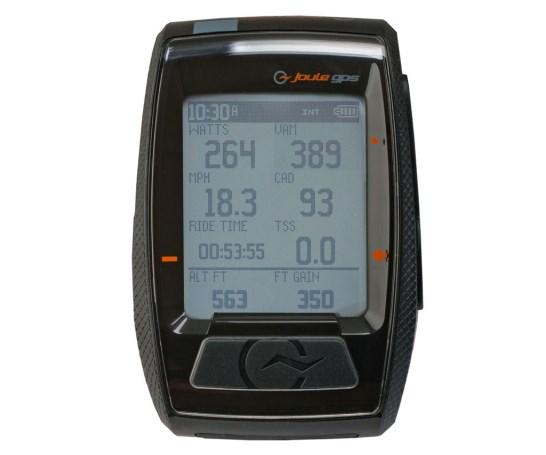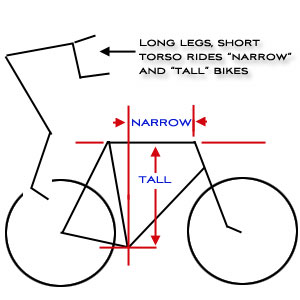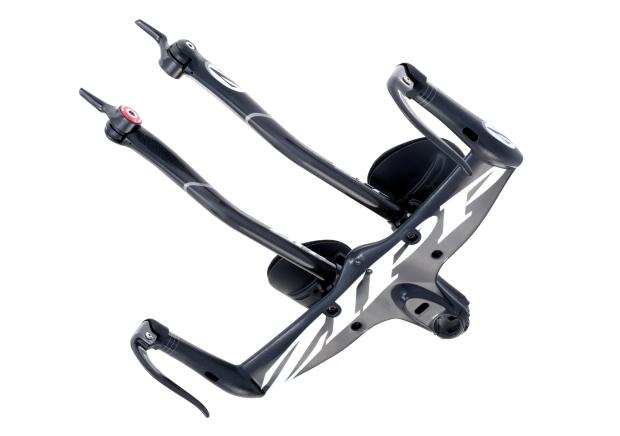Slowtwitch Mailbag – 9
This is the Slowtwitch Mailbag, where we answer readers’ triathlon-related questions. To submit your own question, send an email to us at: mailbag@slowtwitch.com
—
Anonymous writes,
"I'm currently training for my first triathlon in May. I've been building up to this for a couple of years now and have scoured the internet, subscribed to magazines, read training bibles, and talked with numerous people. During this entire time I've yet to have the following question addressed:
At both the both and age group level how does the bathroom break get factored into a race? Does a pro finishing in 8 hours not bother? Do I need to have a plan for this? Any insight that can be provided will be greatly appreciated.”
It’s a fair question, and a legitimate concern. First of all, race distance must be considered. Most people racing Olympic distance or shorter are not going to need a ‘bathroom break’. For half Ironman and Ironman, the scene obviously changes. While there isn’t any inherent difference between age groupers and professionals, you’ll notice that age groupers tend to take more time for their bathroom stops. After all, no money is on the line.
Before we really get in to this, understand that many race directors have rules about bathroom breaks and public nudity. When in doubt, consult them before the race begins. If you get caught doing something you shouldn’t be doing, don’t say we didn’t warn you!
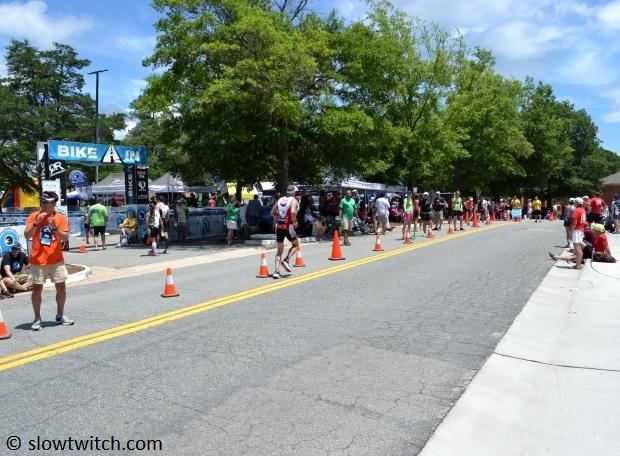
For simplicity’s sake, we need to split this up in to the two clear categories of bathroom stops – ‘number 1’ and ‘number 2’. For the former, it is very possible to take care of business while riding your bike. The general procedure is 1) make sure nobody is behind you or near you, 2) stand up, and 3) let ‘er rip. Rinse off with a water bottle and pick up a new one at the next aid station. For obvious reasons, this works best on downhill sections, where you’ll be able to coast for an extended period. For running, some folks can pull off a ‘number 1’ while on-the-go, and others cannot. Most races have at least a couple portable bathrooms on the run course.
For ‘number 2’, there is only one rule. Unless you are legitimately going for the win in the professional field at a major international race (e.g. for a paycheck), stop to use a portable bathroom. If you have some sort of unexpected McRib-induced emergency and can’t get to a bathroom, find a tree or a bush… and hope that nobody sees you. Good luck and Godspeed.
—
Dan asks,
“I’ve been reading on the forum about different tires, and it seems to be bringing up more questions than answers. A lot of people talk about rolling resistance, but I don’t understand how this is different than cornering grip. Does one come at the expense of another?
Aside from that, I’m curious about picking tires for different conditions. Is there any rule of thumb for this? Does having a tread matter, or are slick tires fine? Do you recommend buying specific tires for rainy days? Are there any road tires that are good enough for riding in the winter?”
Cornering grip and rolling resistance do seem very similar at first glance. How is it that we can have a tire that would be really ‘sticky’ in one area (grip), but really ‘un-sticky’ in another (rolling resistance)?
Cornering grip refers to how much the rubber in the tire actually sticks to the ground. If you were to take the tire in your hand and scrape it across the tarmac, not all tires would stick the same amount. In general, softer compounds grip better, but don’t last as long. Harder compounds tend to last longer, but don’t grip as well.
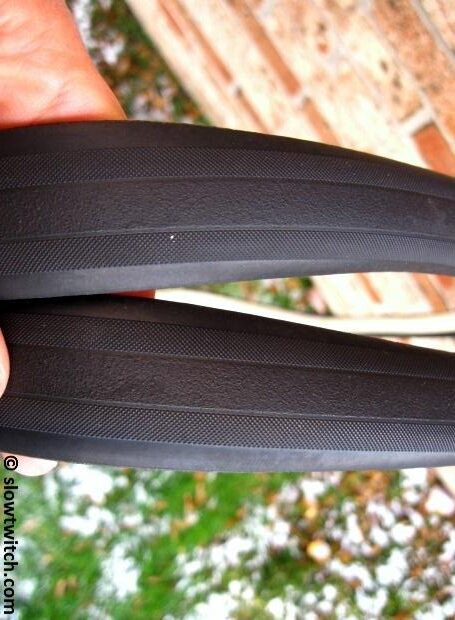
In contrast, rolling resistance is the amount of energy that the tire ‘soaks up’ when it gets deformed on the road surface – and then returns to shape as it leaves the road surface. Many things come in to play here, such as rubber compound, tread thickness, the type and thickness of anti-puncture layer, tire width, and so on. I honestly don’t know if it is possible to have a compound so soft (e.g. with high cornering grip) that it actually sticks to the road like glue and causes an effective increase in rolling resistance. With such a small contact patch on a bicycle tire, I’m guessing that any differences here are very small.
As for your questions on weather conditions, there aren’t any hard-and-fast rules. Many people opt for wider tires in poor conditions. In my opinion, this is as much for placebo effect as anything (and I’m an unashamed subscriber to this). Some people can fearlessly carve through corners on 23mm tires in the rain, while others swear that 25mm tires are better. The biggest constraint is your frame; many modern road and tri bikes won’t fit anything larger than 25mm.
Tread patterns are an area of debate, with people passionately speaking both in favor of and against them. One of the most notable tires of late is the Michelin Pro 4 Grip, which is rain-specific.
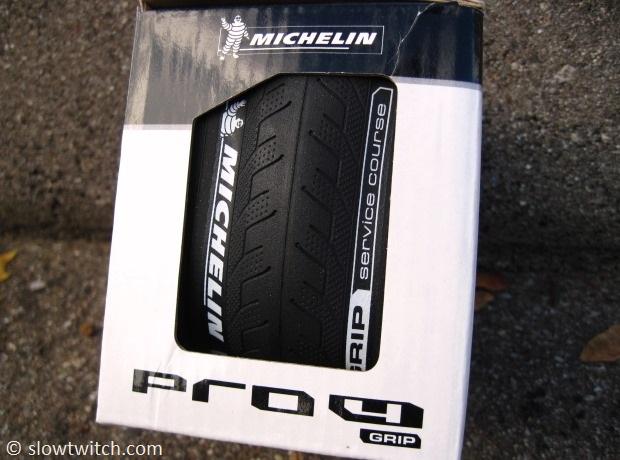
It is offered in 700x23mm size only, and is said to have 15% better wet grip than the standard Pro 4. It has a unique tread pattern, which is specifically cut for wet roads, according to Michelin representatives.
For winter, I personally won’t run anything less than 28mm. In fact, I often ride a cyclocross bike with 35mm knobby tires, or even my 40mm Schwalbe studded tires depending on conditions. What you choose highly depends on your geography and weather. My current favorite 28mm winter road tires are the Specialized Roubaix Pro and Panaracer T-Serv, both of which feature generous volume and a nice tread pattern. When in doubt, I always recommend erring conservatively with your tires in the winter.
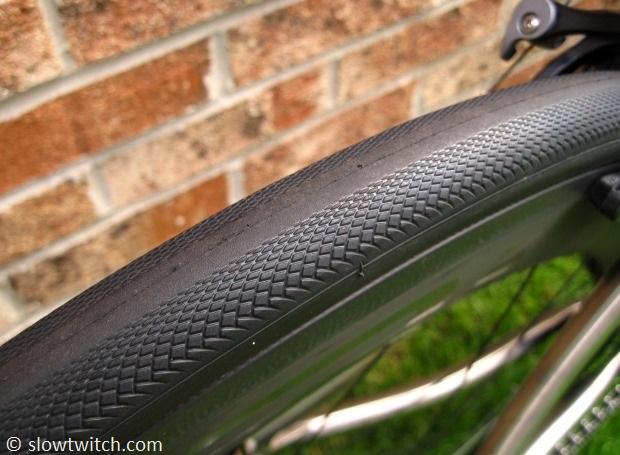
—
Casey writes,
As a soon-to-be first-time tri-bike buyer, I've been reading the articles about bike fit and body morphology. Generally what I'm taking away is that I need to get a bike which matches my morphology (long/low vs. short/tall). I know (generally speaking) that I'm of the short/tall proportions, but I'm trying to quickly narrow the large field of bikes down to a few models which might fit me.
My question is this: If I take ratios of stack/reach of all the bikes in the Slowtwitch database, I notice that each manufacturer's models have a distinct proportion, which carries all the way up the size range. If I'm short/tall, is it appropriate to look at bikes with a higher ratio of stack/reach in order to narrow the field down?
For example, Cannondale Slice and Specialized Shiv have the highest stack/reach ratios in the database of ~1.32. Could I use that range as a starting point? On the other hand, the ‘old’ Cervelo P3 (which is offered by several retailers here at a great price point), has a ratio of ~1.20, which suggests that the proportions might be too long for me, despite the excellent cost value.
Is it appropriate to use the ratio of stack/reach to narrow down the bike models which might be suitable for me, then to go to a bike shop to fit the correct frame size for my body? Or is this oversimplifying the process?”
For those that aren’t familiar with our Stack and Reach database, it can be found on the upper right-hand corner of the Slowtwitch main page:
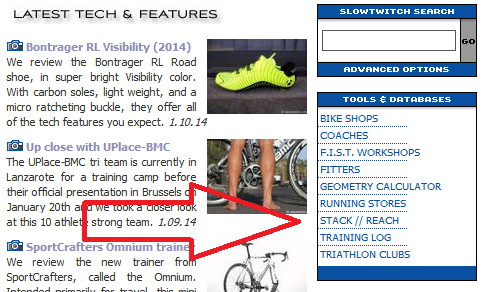
Once you click on ‘Stack // Reach’, you will open up the database:
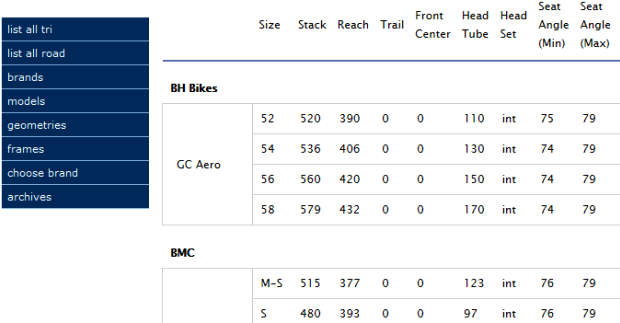
Casey is calculating the stack/reach ratio, accomplished by dividing the stack by the reach.
In my opinion, you are on the right track, Casey. Understanding the stack and reach that you need is one of the first steps in the bike buying process. While many road and mountain bikes are still sold via seat tube angle and top tube length, most triathlon bikes are sold by stack and reach.
One thing I would be careful of is that not all bike brands run consistently within their line. For example, the Medium/Large size Fuji Norcom Straight has a ratio of 1.20, while the Large has a ratio of 1.24. While that isn’t an earth-shattering difference, it is certainly worth noting if Fuji is among the brands you’re shopping. You might nix a brand entirely based on a false assumption that all sizes run the same.
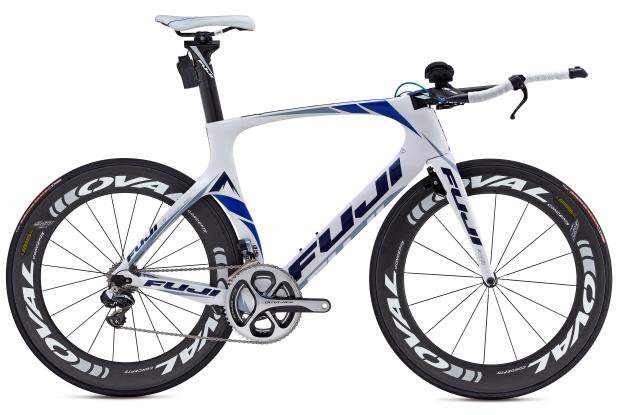
I must ask – how did you arrive at your short/tall decision? Was it a professional bike fit? Have you test ridden any bikes, or borrowed friends’ bikes? If you have not done so, I would highly suggest getting a fit on one of the modern fit bikes that can generate your exact stack/reach, so you know exactly what you need (especially because this is your first tri bike). I’d much rather see someone get an ‘entry-level’ tri bike and spend that extra cash for a fit on the front-end. There’s a decent chance that you’ll need to spend a few bucks modifying the bike with different cranks or a new saddle, so that saved money might get spent anyhow. It’s better to spend it on fit rather than a lighter stem or fancier carbon weave.
Finally, you always need to keep the bike specifications in mind. You could have two 54cm bikes from two different bike brands. Let’s say that they have an identical frame stack and reach. However, one bike comes with an aerobar featuring super-low pads, and the other bike has aerobars with super-high pads. The effective stack and reach (a.k.a. fit stack and reach) would NOT be the same between these two bikes. There’s the stack and reach of the frame, the stack and reach of the handlebar setup, and the net of those two – the fit stack and reach. All must be considered.



